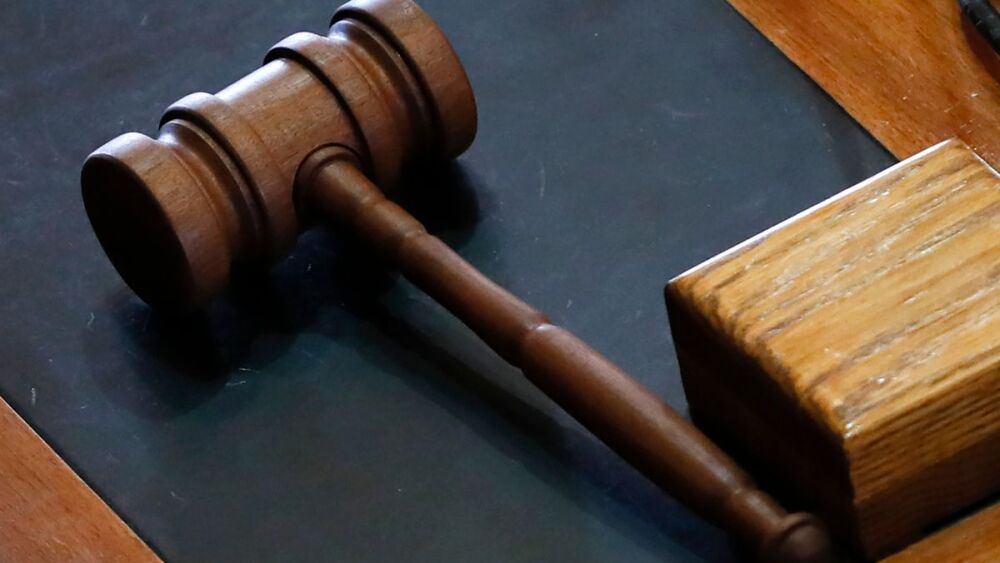At noon on March 17, 2017, Nancy Lewellyn called 911 and told the Shelby County Tennessee Sheriff’s Office (SCSO) dispatcher that she was depressed, suicidal, had a gun and would kill anyone who came to her residence. Three SCSO deputies responded to the call in marked SCSO vehicles equipped with dashcams.
When the deputies arrived and parked, Lewellyn emerged from the front door of her home and turned toward the driveway where a non-police vehicle was parked. She had what appeared to be a.45 caliber pistol (later found to be a BB gun) in her right hand. The dashboard camera from a deputy’s vehicle disclosed that as she walked toward the driveway, she began to raise the gun. A deputy yelled to her and it is disputed as to whether the video shows that she was beginning to turn toward the deputies.
Deputy Paschal fired one shot at Lewellyn and, after a short pause, a second shot was fired. Lewellyn continued forward with her right arm pointed horizontally in the direction of the vehicle in the driveway. Deputy Wiggins also began shooting at Lewellyn.
She reached the vehicle, leaned briefly on the hood and turned back toward the house. [1] The deputies continued to shoot at her while she took a few more steps and collapsed. Ten shots were fired at Lewellyn and eight found their mark. Lewellyn died at the scene. The deputies rendered medical aid while awaiting arrival of emergency medical personnel.
The federal lawsuit
Lewellyn’s estate filed suit pursuant to 42 U.S.C. §1983 in the U.S. District Court alleging that the deputies used excessive force in shooting and killing Lewellyn in violation of the Fourth Amendment. The district court judge rejected the deputies’ assertion of qualified immunity; denied their motion for summary judgment and bound the case over for trial. The deputies filed an appeal with the U.S. Court of Appeals for the Sixth Circuit. The circuit court reversed. [2]
Decision of the Sixth Circuit
Initially, the court explained that it did not intend to follow normal procedural rules in matters of this kind that require the reviewing court to adopt disputed material facts in favor of the plaintiff. The court stated that when video footage of an incident exists, a reviewing court, “need not credit the version of a party [the plaintiff] who asserts facts ‘blatantly contradicted’ by the videotape; rather it should view the facts in the light depicted by the videotape.” [3]
Circuit Court rejection of the District Court use of “screen shots”
The Sixth Circuit expressed displeasure with the district court’s use of “screen shots” (individual frames taken from the video) to assist in its analysis of the dashcam video and for its conclusion that a genuine material fact dispute existed as to whether Lewellyn pointed her gun toward the deputies before she was shot.
The court explained that “by relying on screen shots, a court would violate the teaching of Graham [4] against judging the reasonableness of a particular use of force based upon 20/20 hindsight. While the district court acknowledged that it ‘spent much time pinpointing moments’ to help it establish what occurred, it conceded that such moments ‘do not tell the full story’ in light of ‘how quickly the incident occurred.’”
The court determined that the lower court was in error when it freeze-framed segments of the video and carefully reviewed them to reach a decision on whether the deputies used excessive force. The court explained that the deputies’ actual view of the danger unfolding before them, “did not include leisurely stop-action viewing of the real time situation that they encountered.”
Circuit Court’s grant of qualified immunity
Based upon its analysis of the video, and in particular, the “screen shots” derived from it, the district court concluded that the deputies violated clearly established law by shooting a person who did not point a gun at them or threaten them with a gun. The Sixth Circuit rejected the district court’s conclusion. Instead, the court credited Deputy Paschal’s deposition statement that he was threatened by Lewellyn’s display of the gun when he perceived that she was beginning to turn toward the deputies. The court explained, “The district court’s reliance on a stop-action ‘screen shot’ notwithstanding, Pashal’s perception is consistent with the video viewed in real time.” Qualified immunity was granted to the involved deputies.
Conclusion
This case is important to law enforcement officers for several reasons:
- First, it demonstrates the significant value of dashboard cameras and body cameras to establish what actually happened in an officer-involved shooting. Because of the existence of video camera evidence, a reviewing court was able to ignore federal procedural rules that normally require judges faced with disputed material facts to view them in favor of plaintiffs when considering qualified immunity for defendant officers.
- Second, a federal appellate court rejected a lower court judge’s attempt to justify his conclusion that officers violated clearly established law by carving out from a real-time video, freeze frames of a suspect with a gun, that couldn’t be absorbed by officers in real split-second time. The court ruled that this effort by the lower court amounted to the employment of 20/20 hindsight and judicial second-guessing that the Supreme Court said was improper in Graham v. Connor.
- Third, the court ruled that when a suspect holds a gun in an outstretched hand and begins to turn in the direction of a law enforcement officer, the officer may shoot the offender without waiting for the gun to be pointed directly at him.
References
1. Lewellyn left the gun on the hood of the vehicle before turning back toward the house but this was not seen by the deputies. It could not be seen on the video either.
2. Cunningham v. Shelby County Tennessee, et al. (No. 20-5375) (6th Cir. 4/19/21).
3. (Quoting), Scott v. Harris, 550 U.S. 372, 380-381 (2007).
4. Graham v. Connor, 490 U.S. 386,395 (1989).
DOWNLOAD: How to buy in-car camera systems (eBook)



